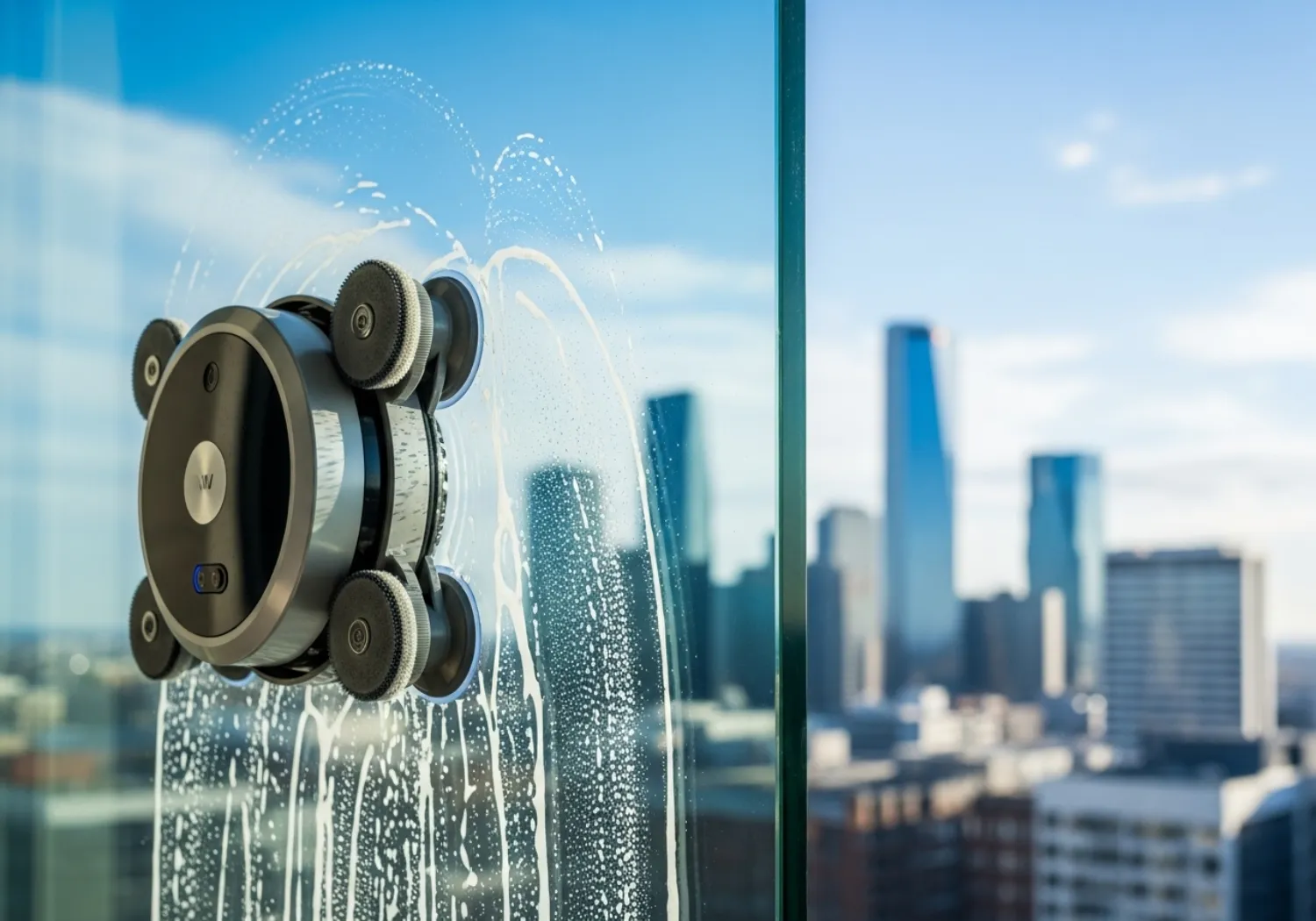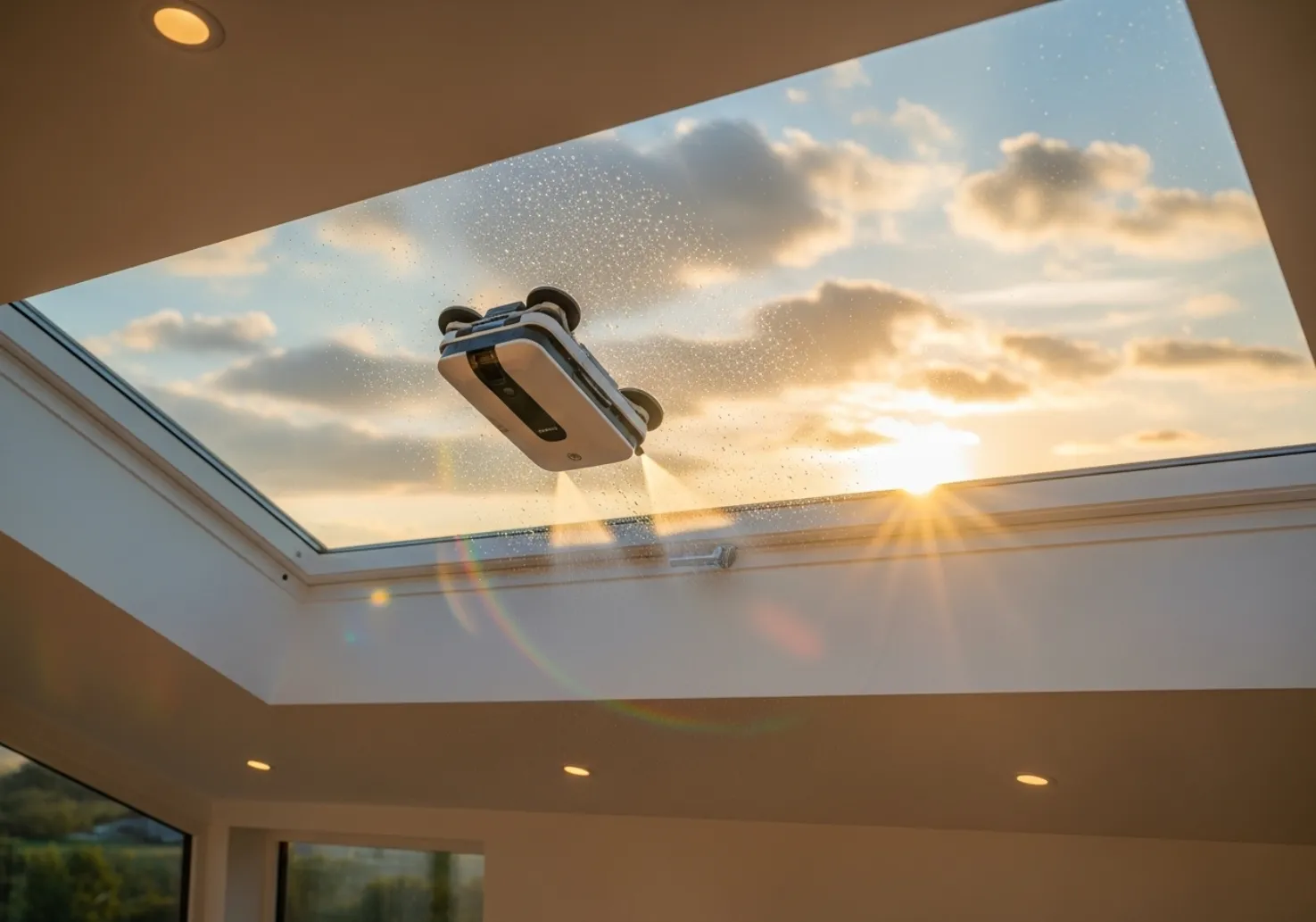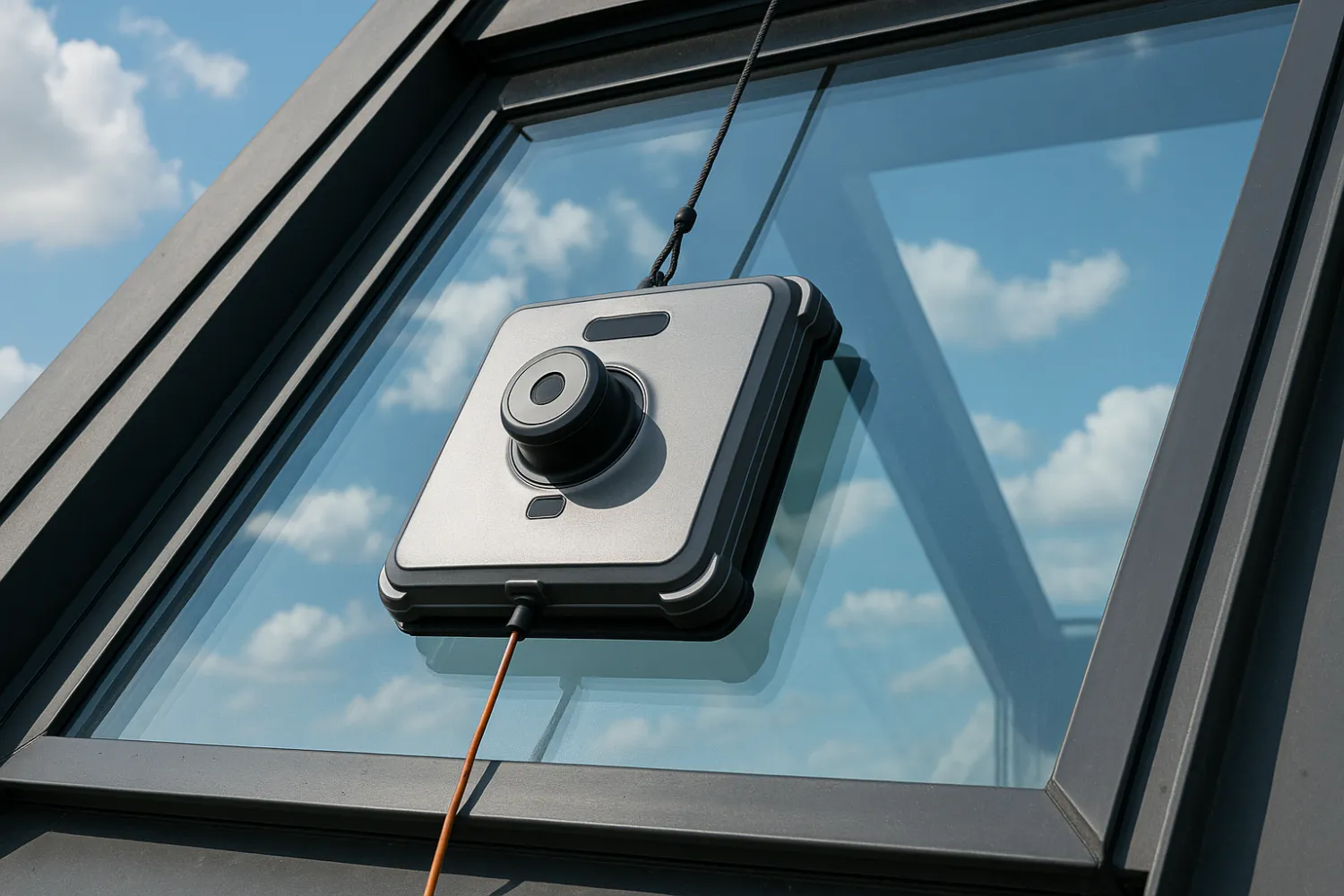
Table of Contents
- 1 Can a Window Robot Really Clean Frameless Glass?
- 2 Tackling the Challenge: Using a Window Robot on a Skylight
- 3 A Step-by-Step Guide to Safely Cleaning Tricky Glass
- 4 Essential Features for a 2025 Window Cleaning Robot
- 5
- 6 Care & maintenance
- 7 Pro tips (from real-world use)
- 8 Final Thoughts: Are They Worth It for Tricky Windows?
Yes, you can absolutely use a window cleaning robot on frameless and skylight glass, but it requires a model with specific features. For frameless windows, the robot must have advanced edge detection sensors to prevent it from falling. For skylights, it needs powerful vacuum strength to defy gravity on inclined glass, alongside a robust safety tether.
Modern window cleaning robots are engineered for these exact challenges. This guide will walk you through the essential technology, safety procedures, and what to look for to get those hard-to-reach windows sparkling safely and effectively in 2025.
Can a Window Robot Really Clean Frameless Glass?
Frameless glass, such as that found on balconies or in modern showers, presents a unique challenge for automated cleaners. Without a physical frame to bump into, a basic robot would simply travel over the edge. This is where a crucial piece of technology comes into play.
From my experience working on product marketing for smart home devices, the evolution of sensor technology has been a game-changer for these robots.
The Critical Role of Edge Detection
The magic behind successful frameless window cleaning is the robot’s sensor system. High-quality models don’t rely on physical bumpers. Instead, they use a combination of laser or infrared sensors to map the surface in real-time.
These sensors constantly scan for the drop-off at the edge of the glass. When they detect the absence of a surface ahead, they instantly signal the robot to stop and change direction. This intelligent path planning ensures it cleans right to the edge without ever going over.
A Common Pitfall to Watch Out For
A common mistake I see is people opting for budget models with basic pressure sensors. These are designed for framed windows and are simply not suitable for frameless surfaces. They will almost certainly fail, leading to a damaged device and a potential safety hazard. Always check that the manufacturer explicitly states the robot is safe for frameless glass.
Tackling the Challenge: Using a Window Robot on a Skylight
Cleaning skylights or any high-up, angled glass is often a daunting and risky task. A good roof window cleaner robot can transform this job from a dangerous chore into a simple button press, but only if it has the right capabilities.

Gravity is the main opponent here. The robot must be able to securely grip the inclined glass throughout its entire cleaning cycle, even in the event of a brief power cut.
Why Vacuum Strength is Non-Negotiable
The single most important feature for a window robot skylight cleaner is its vacuum motor. This is what creates the powerful suction that holds the machine firmly against the glass. Look for models that advertise high-power suction, often measured in Pascals (Pa).
A strong vacuum ensures the robot maintains a secure seal, preventing slips and allowing the cleaning pads to apply consistent pressure for a streak-free finish. In my opinion, this is not an area to compromise on; superior vacuum strength is directly linked to both performance and safety.
Path Planning for Angled Surfaces
Intelligent path planning is also essential. A good robot will use a systematic cleaning pattern, such as a Z-shape or N-shape, to ensure complete coverage without losing its orientation on an angle. This prevents it from sliding down or missing spots, which can happen with more basic, randomised movement patterns.
A Step-by-Step Guide to Safely Cleaning Tricky Glass
Putting a robot on a high skylight can be unnerving the first time. Following a clear process ensures both safety and a perfect clean.
Preparation is Key: Before you begin, ensure the robot is fully charged. Clean any dust or debris from its treads and attach fresh, clean microfibre pads.
ALWAYS Attach the Safety Tether: This is the most crucial step. Securely fasten the robot’s safety cord and carabiner to a sturdy anchor point, like a heavy piece of furniture or a fixed structural element. The tether should have enough slack for the robot to cover the entire window but not so much that it could hit the ground if it fell.
Apply Cleaning Solution: From my experience, it’s best to lightly spray the cleaning solution directly onto the microfibre pads, not the window itself. Spraying the glass can cause the robot’s wheels to slip, especially on an incline.
Position the Robot: Place the robot firmly in the middle of the window, away from the edges. Hold it in place for a moment as you switch it on to allow the vacuum to engage and create a secure seal.
Power On and Select a Programme: Use the remote control or companion app to power on the robot and select the appropriate cleaning cycle. Most models will automatically begin their programmed path.
Supervise the Clean: Especially for the first few uses, stay and watch the robot complete its cycle. This allows you to familiarise yourself with its movement and ensure it navigates the edges and corners correctly.
Safely Retrieve the Robot: Once the cleaning is complete, the robot will typically return to its starting point. Use the remote control to guide it to a spot where you can safely reach it before switching off the vacuum.
Essential Features for a 2025 Window Cleaning Robot
When you’re ready to invest in a roof window cleaner or a device for your frameless glass, here are the non-negotiable features you should look for:
Advanced Edge Detection: Specifically look for laser, infrared, or sensor-based systems advertised as “frameless compatible.”
High-Powered Vacuum Strength: This ensures a secure grip on skylights and vertical glass, providing peace of mind.
Uninterruptible Power Supply (UPS): A small, built-in backup battery is a vital safety feature. It keeps the robot attached to the window for several minutes if the main power is interrupted, giving you time to retrieve it safely.
A Strong Safety Tether and Carabiner: The quality of the safety cord reflects the manufacturer’s commitment to safety. Ensure it’s robust and long enough for your needs.
Remote Control or App Functionality: Essential for starting, stopping, and guiding the robot on hard-to-reach windows like skylights.
Sufficient Extension Cable: Check the total length of the power cord and any included extension cable to ensure it can comfortably reach your highest or furthest windows from a power socket.
Care & maintenance
- Wash pads thoroughly after each session at low temperature; air-dry fully to avoid lint and preserve fibre quality. Do not tumble dry, as high heat can damage the fibres.
- Wipe the vacuum seal and sensors gently with a lint-free cloth; for stubborn dirt use a small amount of alcohol-based cleaner. Regular sensor care improves edge detection accuracy.
- Store the robot in a dust-free case; coil the extension cable loosely to prevent internal breaks. Keep in a cool, dry place away from direct sunlight.
- Test the battery backup monthly by briefly unplugging during suction. Listen for the alarm and confirm the unit maintains grip for the advertised backup period.
- Inspect the safety tether and clips regularly for wear and replace if frayed—this is your last line of protection.
- Every few months, check the software/firmware updates via the app to ensure optimal performance and bug fixes.
Pro tips (from real-world use)
- Map tricky panes with the remote control to learn the edges before you trust autonomy. Use this to trace the outline and mark any problematic zones where sensors may fail.
- Keep a second set of pads ready so you can swap to dry mid-clean. Having an organised pad rotation routine ensures better performance on large glass surfaces.
- On very clear frameless glass, place a small reference sticker 2–3 cm from one edge during setup; some sensors detect it better than ‘empty’ infinity. A discreet marker also acts as a quick visual guide during monitoring.
- If working on skylights, try short manual joystick runs first to see how the robot handles slope changes before allowing full autonomy.
- Always keep the safety tether slightly taut, not loose; this reduces swing risk if suction weakens suddenly.
Final Thoughts: Are They Worth It for Tricky Windows?
For those with frameless glass balconies, high-up skylights, or large, inaccessible windows, a window cleaning robot is more than a gadget – it’s a genuine solution to a difficult and often dangerous problem.
Whilst the initial investment might seem high, the safety benefits and convenience are undeniable. By choosing a model with the right features – powerful suction, intelligent edge detection, and robust safety measures—you can keep every pane of glass in your home looking immaculate with minimal effort. It’s a smart investment in both your home’s appearance and your personal safety.







